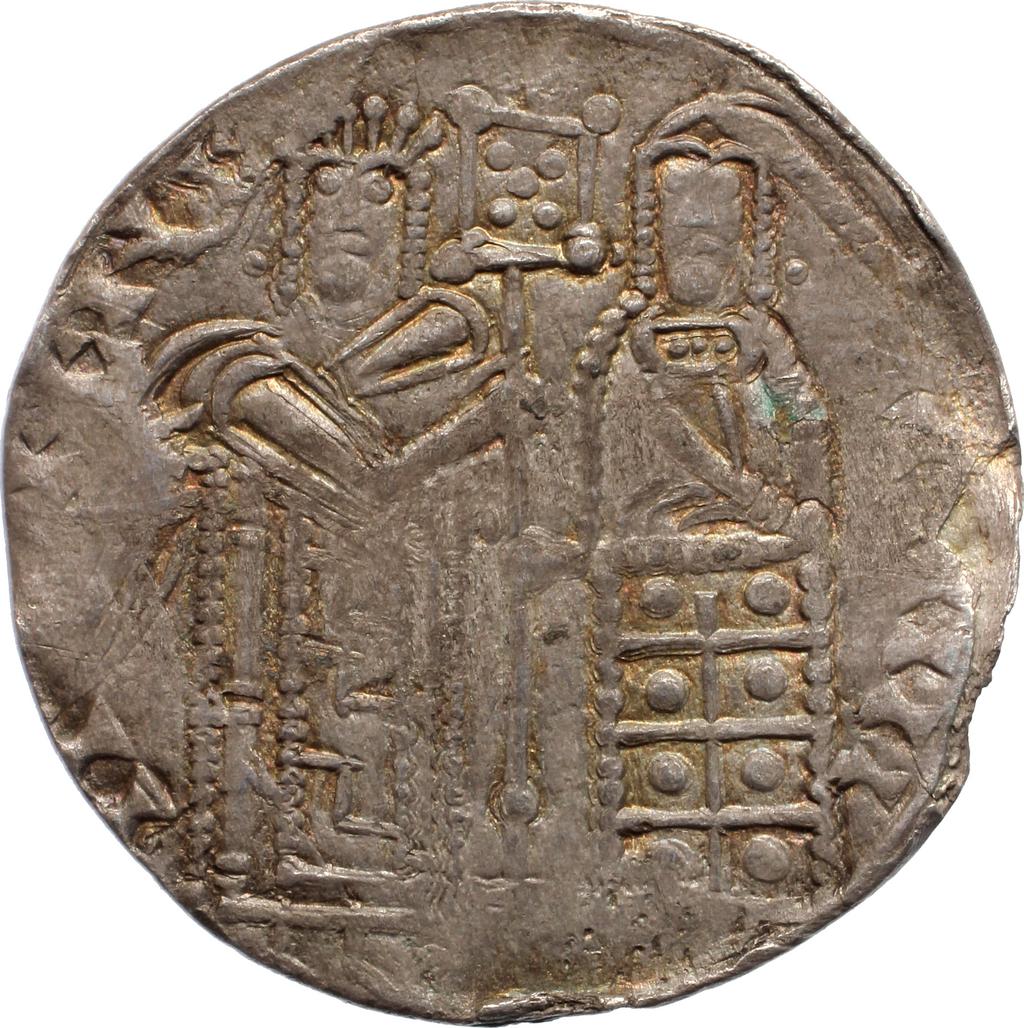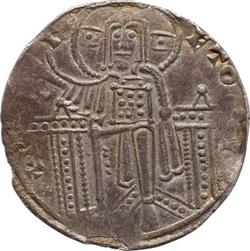Awaiting location update
Titles
A coin of outstanding importance. Only two double pennies are known, the other of the same ruler, mint and moneyer but a different design, being in the Danish National Collation (Hauberg 1). The phenomenon of a multiple denomination is quite extraordinary for eleventh-century Europe. The design is that of a regular penny (Hauberg 7), but the dies and flan are larger and the coin is twice the weight of a penny (c.0.95g). Its purpose is a matter of debate. It is unlikely that it could ever in practice have had a monetary function, and it was probably intended as a presentation piece. The design imitates a Byzantine histamenon nomisma of Michael V (1041-2), and it is one of a group of coin designs of Sven Estridsen that were apparently inspired by Byzantine coins in the treasure brought back to Scandinavia in 1045 by Harald Hardrada following his service in the Imperial guard.
Maker(s)
Ruler:
Sweyn II Estridsson (1047-76)
Entities
Categories
Description
Denmark, Sven Estridsen (1047-75), silver, double penny, Lund mint, moneyer Wulfet, Byzantine type; obv. I[ ]IIII / II / LFNI:, the Archangel Michael and the emperor holding a labarum; rev. +P / [ ]L / F / ET O/ I, Christ enthroned (Hauberg -, unique; type as penny, Hauberg 7); 22.5mm, 1.92g. From W. Conte (Baldwin sale 13, lot 1443, not sold); ex S. Bendall; found in East Anglia, c.1990. Published M. Fornitz, 'En dobbeltpenning fra Svend Estridsen?', Nordisk Numismatik Unions Medlemsblad 1994, pp. 2-5. See also NACF Review 1997.
Notes
History note: Under Review
Components of the work
Object
composed of
silver
Weight 1.92 g
Identification numbers
Accession number: CM.2266-1997
Primary reference Number: 271871
Stable URI
Audit data
Created: Tuesday 17 November 2020
Updated: Tuesday 21 October 2025
Last processed: Tuesday 21 October 2025
Associated departments & institutions
Owner or interested party:
The Fitzwilliam Museum
Associated department:
Coins and Medals





